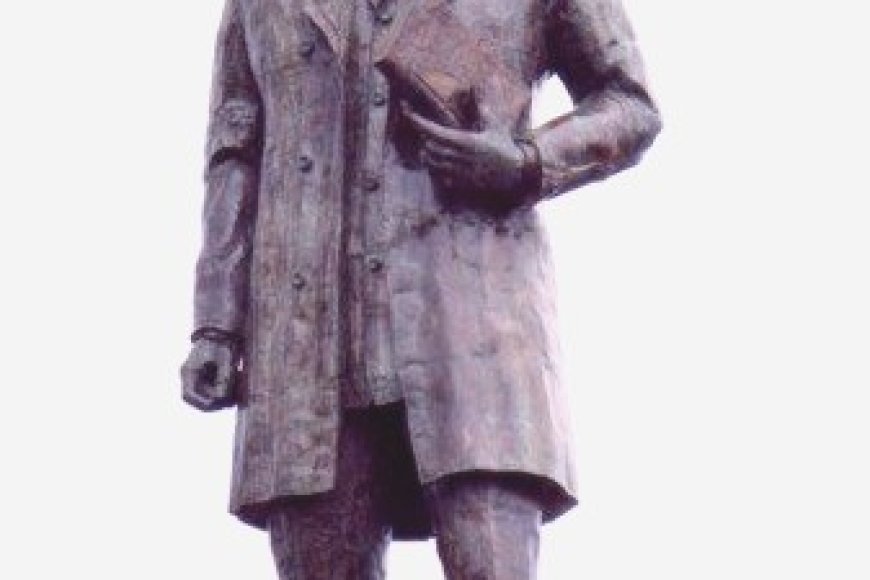Sunday, July 13, 2025 | 2 a.m.
Recent proposals by congressional Republicans to sell off vast stretches of Nevada’s public land united environmentalists, local leaders and residents across party lines in opposition to stop the effort in its tracks.
Yet as Congress considers a new, more targeted land bill, old tensions over growth, conservation and community priorities are resurfacing.
With those efforts to sell public land now defeated, attention has turned to how those proposals unfolded — and why they failed.
When the Senate was negotiating the contents of President Donald Trump’s “One Big, Beautiful Bill,” Sen. Mike Lee, R-Utah, wanted to make millions of acres of federally owned land in Nevada eligible for sale. If the provision had passed, the Bureau of Land Management and U.S. Forest Service would have been directed to sell 3.3 million acres across 11 states in the West.
Backlash to the provisions in Nevada was overwhelming.
Kristee Watson, executive director of the Nevada Conservation League, noted that opposition wasn’t divided by party lines despite Republicans putting up both plans. Protecting that land is “just part of the state’s culture,” Watson said.
Nevada’s environmentalists and conservationists were unified in organizing against the provisions, but that unity breaks down when discussing the other land sale making its way through Congress: Democratic Sen. Catherine Cortez Masto’s Southern Nevada Economic Development and Conservation Act.
While organizations like the Sierra Club oppose the bill, it lacks some of the biggest concerns attached to Nevada Republican Rep. Mark Amodei and Lee’s proposals. There’s local input on development, more money from the sale would stay in the state and, perhaps most importantly, 2 million acres would be set aside for conservation and recreation.
That includes increasing the size of the Red Rock Canyon and Sloan Canyon national conservation areas. Another 45,000 acres would be held in a trust for the Moapa Band of Paiutes, with around 3,000 acres for the Las Vegas Paiute Tribe, according to a March release.
But it still misses the mark, said Sierra Club Toiyabe Executive Director Olivia Tanager. The 25,000 acres for sale would encourage urban sprawl, where low-density development takes more space, by opening land in more remote areas of the region, such as Jean.
“In Nevada, this whole idea that we can just invite more people in, and then it’s going to expand the tax base and that’ll cover all of our costs, it’s ludicrous,” said Kyle Roerink, executive director of the Great Basin Water Network. “We’ve been doing it for more than a quarter-century.”
Sprawl also increases the urban heat island effect, advocates said, which can be lethal under the Mojave Desert sun. More than 500 people died in Clark County last year due to extremely high temperatures.
Instead, there should be a focus on building within the already-developed area of the valley, Tanager said. A recent study from the Regional Transportation Commission of Southern Nevada found 82,000 acres for infill development.
“This proposal has been the biggest wedge in the conservation and environmental community in Nevada,” Tanager said. “It’s really tough, but I don’t believe you can call yourself an environmentalist or conservationist and advocate for lands to be sold off at the expense of community members.”
Cortez Masto defended the legislation in a statement to the Sun, noting the number of affordable housing and conservation organizations, along with local governments, that have come out in support. It also has the backing of Republican Gov. Joe Lombardo.
“Las Vegas is expected to see an increase in population of more than 820,000 people by 2060, and we can’t simply ignore that growth,” she said. “Solving the affordable housing crisis and helping Nevada grow responsibly is going to take an all-of-the-above approach.”
SNEDCA was first proposed in Congress in 2021 by Masto and Rep. Dina Titus, D-Nev., but Titus has since reversed her support. While proponents say the legislation would encourage affordable housing development, Titus rejected that idea during her address to the Nevada Legislature in April.
“That bill doesn’t do anything about affordable housing and certainly doesn’t require anybody to pay for the infrastructure that’s going to be needed for that growth,” Titus said.
Even though the national conversation about public land during reconciliation was centered on Republican-led efforts, Tanager said her organization included information about SNEDCA in its town halls rallying against the previous massive sell-off.
“We need to be building momentum off of this Lee defeat, and we need to keep looking at Lake Mead,” Roerink said. “We need to keep looking at the cost of living and we need to keep putting pressure on politicians to say, ‘Let’s do something different and we’ll have your back.’ ”
Standing firm or getting a ‘seat at that table’
Watson supports SNEDCA, but said she understands environmentalists’ concerns about water usage and rapid growth. However, living under the second Trump administration changes the calculus, she said.
As Trump signed an order establishing a sovereign wealth fund in February, Treasury Secretary Scott Bessent said the administration was going to “monetize the asset side of the U.S. balance sheet for the American people.”
Observers noted that Interior Secretary Doug Burgum used similar language around the country’s “balance sheet” while discussing public lands during his January confirmation hearing.
From Watson’s perspective, SNEDCA gives Nevada and its localities a say in how that land is used. She also doesn’t see ardent opposition to any development whatsoever as a viable position, given the federal government’s interest.
“The alternative is that we basically just have our land sold from underneath our feet and we have no benefit,” Watson said. “I want a seat at that table. I want to have a conversation that is including all of the important partners.”
Money from the sales could be reinvested to protect local habitats and conserve water, Watson said.
Roerink similarly said that Lee and other politicians showed their hand, and predicted that the Republican-led land sales in the reconciliation process wouldn’t be their last attempt. Even still, he believes Cortez Masto will have a tough road ahead to gain passage of SNEDCA because there’s “just not a lot of appetite for it right now.”
Roerink also echoed Amodei’s thoughts on the Nevada-specific legislation. Roerink said that in a “post-Harry Reid” era, no one member of the state’s D.C. delegation has the ability to put SNEDCA on the floor of Congress and push it through.
“If somebody in the delegation had that type of juice, we wouldn’t be having this conversation right now,” Roerink said.
Jackie Spicer, coordinator of the Nevada Environmental Justice Coalition, said what conservationists are willing to give up was too high a price to justify backing the legislation.
“Our mission is to liberate frontline communities from environmental hardship, and we can’t ignore the consequences of sacrificing communities within the urban heat island for unchecked sprawl,” Spicer said.
Instead, Roerink said there needed to be an effort to push conservation for conservation’s sake, not to balance out the effects of a land sale. The same goes for supporting local Native American tribes, he said.
Nongovernmental organizations, he said, are catching on to his point of view. There’s been a shift since SNEDCA was first introduced, “and that’s because you can’t just tokenize equity in all of this,” Roerink said.
“What (conservationists) always said was, ‘If we’re not going to get it this way, we’re never going to get it at all,’ ” Roerink said. “Yes, you might be getting some of what you wanted, but you’re simultaneously really getting screwed.”
Affordable housing
Whether SNEDCA supports affordable housing depends on whom you ask. While it’s been one of the bill’s main selling points, Roerink said, “there’s nothing in the bill that guarantees affordable housing.”
Jocelyn Torres, chief conservation officer at the Conservation Lands Foundation, agreed that affordable housing wasn’t “guaranteed on this parcel versus that land parcel,” but asserted that the bill did encourage its development.
Cortez Masto’s office explained that SNEDCA emphasizes local input. With that, detailed planning for what needs to be developed where would be the responsibility of local governments.
To help that along, the bill directs the Bureau of Land Management and Department of Housing and Urban Development to prioritize those affordable housing applications.
The senator is also pushing to expand the Low Income Housing Tax Credit and reform the Federal Home Loan Bank system as part of her “all-of-the-above” approach, Cortez Masto’s office told the Sun.
But Tanager argues that the areas marked for development in SNEDCA aren’t conducive to low-cost units. The cost of transportation associated with living on the outskirts of Southern Nevada would “preclude people who really need affordable housing.”
She doesn’t see the Regional Transportation Commission filling that gap.
“People who are struggling to pay the rent don’t want to have to move out to Jean in order to afford to live in Southern Nevada,” Tanager added. “People want affordable housing in the neighborhoods that they already live in, close to their friends and family and close to the existing resources.”
Infrastructure costs associated with building on previously untapped land add to the development cost, Roerink said. While developers will pay some upfront costs, setting up power, water and roads are “forever costs,” he said.
That’s usually countered by developers who say it’s too expensive to develop land within the city’s footprint. If that’s true, Roerink said there needed to be a subsidy that makes infill construction more accessible.
“Building affordable housing out in Jean, Nev., is not going to solve (the housing crisis) for our entire valley,” Spicer said. “It’s not going to improve things when we are spending all of the county’s resources by investing in new infrastructure and taxpayers bearing the burden to expand the city.”
.png)








 English (US) ·
English (US) ·